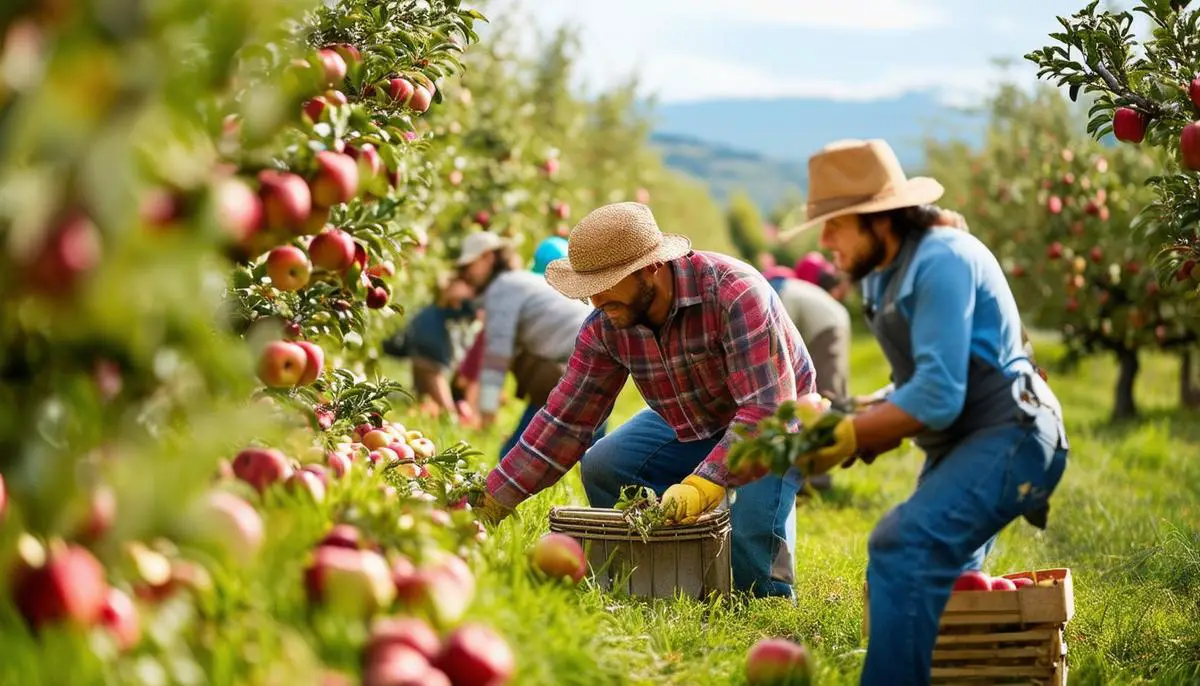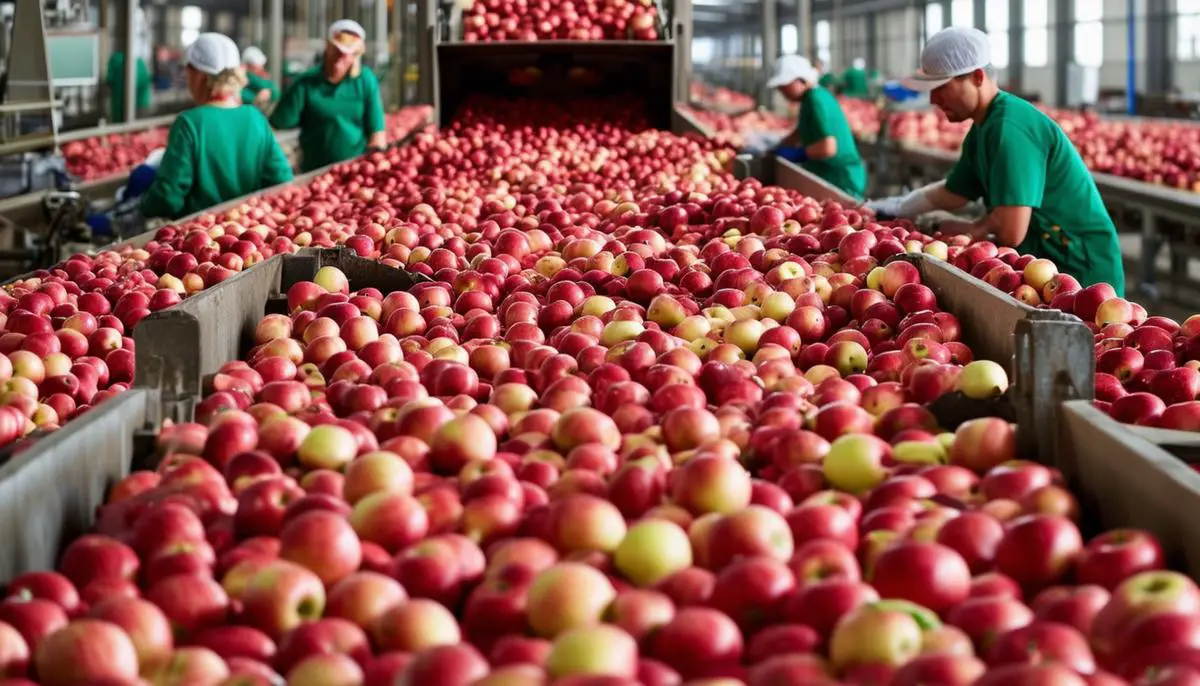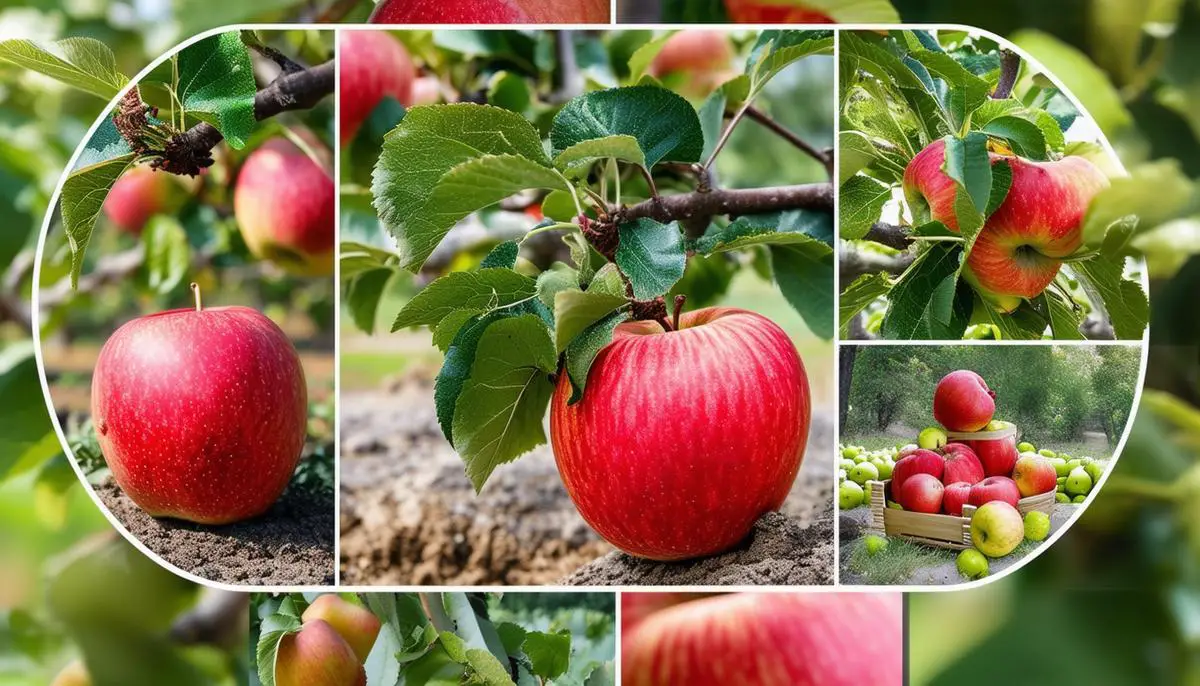Economic Impact of Apple Farming
Apple farming isn't just about growing fruit; it's an economic powerhouse. In New York State, the apple industry contributed a whopping $574 million in total economic output. Let's sink our teeth into the juicy details!
Direct Effects
Apple farming employed 5,605 individuals, generating $164.7 million in direct labor income. With $317 million in direct output, it's fueling local economies like a turbo-charged tractor.
Indirect Effects
For every job directly supported by apple farming, 0.25 jobs are created outside the industry. That's $116 million flowing into businesses that might never touch an apple but thrive because of them.
Induced Effects
When apple workers spend their paychecks, they're spreading the wealth. This spending generated an additional $141 million in economic output. For every $1 earned in apple farming, an extra $0.56 lands in the pockets of unrelated workers. Talk about a sweet deal!
Processing Power
Apple processing in New York State is a heavyweight champion, creating $1,307.1 million in output. This sector turned $276 million into labor income for 4,016 jobs. With a contribution multiplier of 2.58, it's clear apple processing packs a punch.
Farm Support Services
Support services added $19.2 million to the New York economy. They're the unsung heroes of the apple world.
Real Numbers: New York's True Impact
The total contribution from all apple-related sectors swelled to $2.1 billion. That's $587.9 million in labor income, supporting 11,872 jobs. Crisp and impressive!
Apple Multipliers
- For every dollar of apple-related output, $0.58 turns up in non-apple industries.
- For each $1 in apple industry labor income, another $0.48 boosts other sectors.
It's like an economic conga line, and apples are leading the dance!

Role of Apple Processing Industries
Apple processing industries are the wizards that transform humble apples into magical products like frozen slices, canned goodies, and hard cider. These sectors are economic dynamos, churning out a mind-boggling $1,307.1 million in total economic output. Talk about apple-solutely amazing!
Employment in these sectors is nothing short of spectacular. Every job in apple processing supports another 1.46 jobs outside the industry. It's like a job-creating domino effect, and apples are knocking them down left and right!
Hard cider production deserves a special toast. Cideries have popped up faster than bubbles in a freshly poured glass, brewing unique concoctions that make taste buds do a happy dance. These liquid gold factories are turning apples into tourist magnets, boosting local economies faster than you can say "cheers!"
The ripple effects stretch far and wide. From graphic designers crafting the perfect cider label to logistics experts ensuring timely deliveries, the apple processing industry creates a thriving network that's juicier than a ripe Honeycrisp.
So, next time you're munching on apple chips or sipping some hard cider, remember you're not just indulging your taste buds – you're supporting a vast and vibrant ecosystem of local industries and communities. Now that's something to crunch on!

Supporting Industries and Supply Chains
Behind every crisp apple is a network of supporting industries that keep the apple economy rolling like a well-oiled machine. Let's peel back the layers and explore these unsung heroes!
- Agricultural support services: The backbone of thriving orchards, adding a juicy $19.2 million to New York's economy. They're the fertilizer-spreading, pest-controlling superheroes that ensure your apples are picture-perfect.
- Nursery stock suppliers: The green-thumbed wizards who grow baby trees, contribute $10.6 million to the apple supply chain. They're like the fairy godmothers of orchards, waving their magic wands (or watering cans) to create future apple bounties.
- Marketing mavens: This $5.2 million sector ensures apples get their moment in the spotlight. They're the creative geniuses behind those mouth-watering ads that make you want to sprint to the nearest orchard.
These support sectors create a positive feedback loop that's sweeter than apple pie. When nursery stock suppliers buy equipment, they're supporting local manufacturers. When marketing agencies roll out campaigns, they hire photographers, media planners, and even influencers. It's an economic conga line, and everyone's invited!
"The next time you bite into an apple, remember you're not just enjoying a snack – you're taking a chomp out of a complex web of economic activity that sustains thousands of livelihoods."
Now that's food for thought!

Innovative Economies: Case Studies and Best Practices
Hold onto your apple carts, folks! We're about to dive into some mind-blowing case studies that show how the apple industry isn't just growing fruit – it's cultivating entire economic ecosystems!
Cornell University and the New York Apple Association (NYAA) teamed up like Batman and Robin to boost the apple industry. Their secret weapon? Contribution analysis – a method that captures the full spectrum of economic activities. It's like comparing a lonely apple to a bustling orchard!
But wait, there's more! These brainiacs didn't just rely on boring national averages. They went full Sherlock Holmes, gathering primary data through targeted surveys. When faced with low response rates, did they give up? Heck no! They found alternative data sources faster than you can say "apple pie."
Now, onto the pièce de résistance – multi-industry economic analyses. This technique is the secret sauce that binds everything together. It's like ensuring no apple slice gets left behind in a fruit salad. By examining interconnected industries, they painted an intricate map of the economic landscape that would make Picasso jealous.
The results? Apple farming contributed $574 million in economic output, supporting over 11,000 jobs. That's more impressive than landing a quadruple axel while juggling apples!
This research didn't just gather dust on a shelf. Oh no! It caught the attention of policymakers faster than a worm spots an apple. The findings provided a compelling case for further investments, leading to partnerships and initiatives aimed at bolstering apple farming and processing.
Lessons from Cornell's Orchard of Wisdom:
- Contribution analysis
- Data collection
- Multi-industry economic analyses
These are powerful tools for understanding and enhancing economic impact. They offer a view so comprehensive, it's like seeing the apple industry in IMAX 3D!
Next time you bite into an apple, remember: there's a whole scientific and economic saga behind that moment. It's not just a snack – it's a taste of economic brilliance!

Apples are the keystones of local economies, supporting countless jobs and businesses. So, each time you enjoy an apple, remember you're biting into a cornerstone of economic stability.
- Schmit TM, Severson RM, Strzok J, Barros J. Economic Contributions of the Apple Industry Supply Chain in New York State. Cornell University. 2018.
- U.S. Apple Association. Apple Industry Statistics. 2020.
- New York Apple Association. Economic Impact of the New York Apple Industry. 2019.